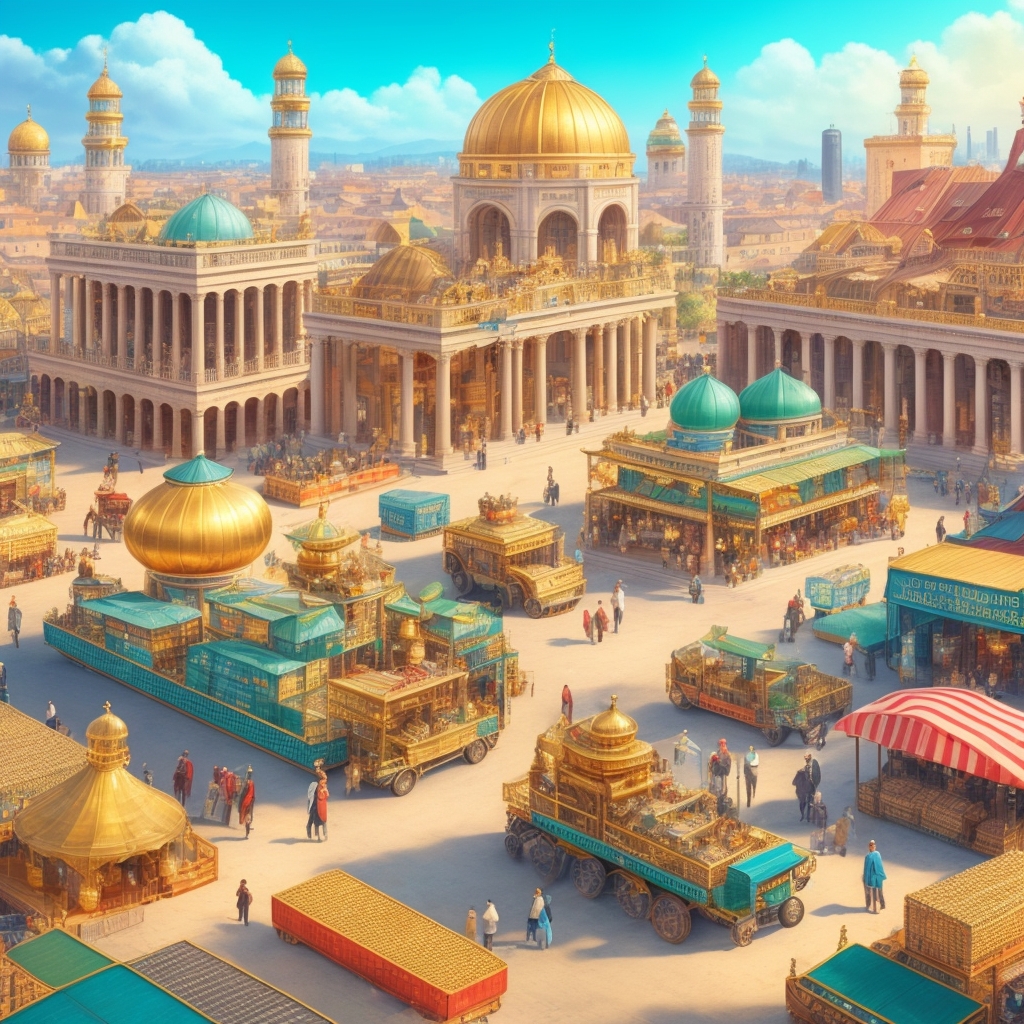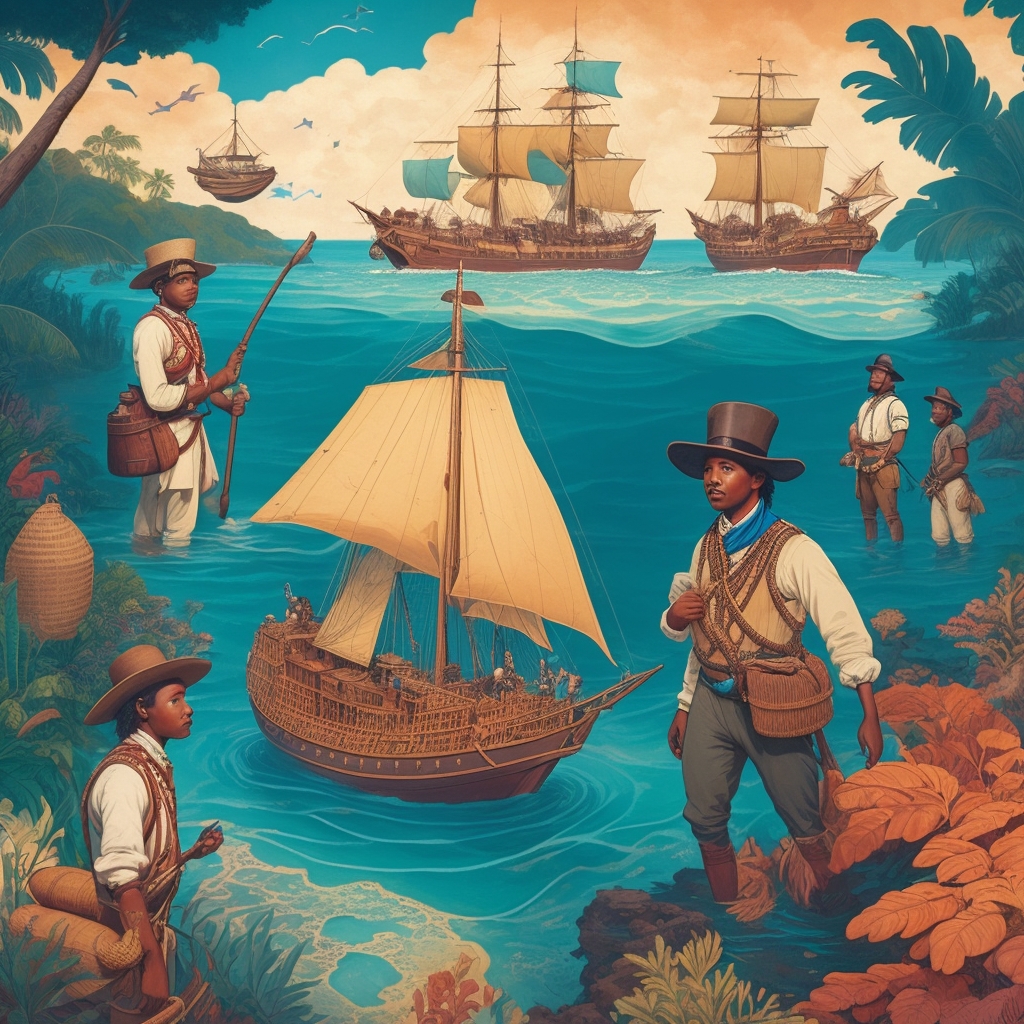What Were the Major Economic Drivers of the Persian Empire?
Introduction
The Persian Empire, known for its vast expanse and rich history, was one of the most powerful civilizations of the ancient world. Spanning three continents—Asia, Africa, and Europe—the empire was not only a military and political powerhouse but also an economic juggernaut. Understanding the economic drivers of the Persian Empire provides insights into how it maintained its dominance for centuries. This article explores the intricate economic systems and technological developments that fueled its growth, drawing on recent scholarly interpretations and archaeological findings.
Trade and Commerce
One of the primary economic drivers of the Persian Empire was its strategic position as a trade hub. The empire’s vast territory included regions that were rich in natural resources and were crucial for trade across the ancient world. Trade was a significant source of revenue for the empire, alongside agriculture and tribute. The Achaemenid period marked a “favorable economic era,” fostering business relations even between distant regions like Babylon and Greece.
The Royal Road: An Artery of Empire
The Persian Empire’s Royal Road was an ancient highway reorganized and rebuilt by the Persian king Darius the Great in the 5th century BCE. Stretching over 2,500 kilometers (approximately 1,667 miles) from Sardis in Asia Minor to Susa in Iran, this road facilitated efficient trade and communication across the empire. It enabled the swift movement of goods, soldiers, and information, acting as a catalyst for economic prosperity and administrative control. Mounted couriers of the Angarium system could traverse the entire length in about nine days, a journey that would take ninety days on foot. This infrastructure also served as a precursor to later major trade routes like the Silk Road.
Extensive Trade Networks and Commodities
The Persian Empire engaged in significant trade with neighboring civilizations, including the Greeks, Egyptians, and Indians. The exchange of goods such as textiles, spices, and precious metals was commonplace. Persian markets were known for their diversity, offering products from various parts of the world, contributing to the empire’s wealth and cultural richness.
Key commodities traded included:
- Textiles and Carpets: Highly prized, Persian textiles, particularly silks, were coveted by elites both within and beyond the empire’s borders, indicating their significant economic and cultural value.
- Precious Metals and Stones: Gold from Bactria, turquoise from Chorasmia, and lapis lazuli from Afghanistan were sourced for royal projects and trade.
- Agricultural Products: Grains, fruits, and spices were exchanged across the vast territories.
- Luxury Goods: Evidence suggests trade in various luxury items, reflecting the empire’s ability to integrate diverse economies.
This extensive commercial activity led to the prevalence of Persian words for typical trade items, many of which found their way into other languages, including English (e.g., “bazaar,” “shawl,” “turquoise”).
Agriculture and Resource Management
Agriculture was a cornerstone of the Persian economy, with fertile lands supporting a variety of crops and livestock. The empire controlled rich agricultural areas, especially in Mesopotamia, which contributed significantly to its economic power.
Innovative Irrigation and Farming Techniques
The Persians were pioneers in agricultural technology, developing advanced irrigation systems such as qanats. These underground channels transported water from aquifers to arid regions, significantly enhancing agricultural productivity. This innovation supported the cultivation of wheat, barley, dates, and pomegranates, ensuring food security and surplus for trade. The spread of qanat technology by the Achaemenids enabled the cultivation of idle and marginal lands across Iran, the Middle East, North Africa, and Central Asia, leading to increased crop yields and incomes for peasants. Even today, qanats supply a significant portion of water for Iranian agriculture, supporting crops like pomegranate, pistachio, and saffron.
Strategic Resource Management
The Persian Empire was rich in natural resources, including minerals like gold, silver, and copper. These resources were meticulously managed and extracted, providing raw materials for both domestic use and international trade. The empire’s administration ensured that these resources were exploited sustainably, maintaining a steady economic foundation. Recent archaeological discoveries, such as evidence of chromium steel production in Chahak, southern Iran, dating back to the 11th century CE (with medieval Persian manuscripts describing a famous steel industry there), highlight the long tradition of advanced resource utilization and craftsmanship in the region.
Taxation and Administration
The Persian Empire’s economic success was also due to its sophisticated system of taxation and administration, which centralized control while allowing for regional specificities.
The Satrapy System: Efficient Governance
The empire was divided into provinces known as satrapies, each governed by a satrap. This system allowed for efficient tax collection and local governance. Satraps were responsible for collecting taxes in the form of goods and coinage, which were then used to fund public works, the military, and the royal court. Darius the Great revolutionized the economy by introducing a regulated and sustainable tax system that tailored taxes for each satrapy based on its projected productivity and economic potential. For instance, Babylon was assessed for high silver taxes, while Egypt owed grain in addition to silver. Detailed records, including cadastral records of land and crops, helped ensure accurate and fair taxation.
While some traditional scholarship suggested “overtaxation” led to instability, recent studies on Achaemenid taxation, particularly in Persian Babylonia, indicate that taxes often included service obligations (like corvée labor) or payments in kind, although silver use became more common. The construction of major imperial projects like Persepolis was often supported by these corvée laborers.
Standardized Coinage: The Daric
Under Darius the Great, the Persian Empire introduced a standardized currency, the Daric. This gold coinage, alongside the silver siglos, facilitated trade by providing a reliable and widely accepted medium of exchange. The introduction of standardized currency was a significant economic reform that enhanced economic stability and growth across the vast empire. The Daric, weighing between 8.10 and 8.50 grams with high purity (98-99% gold), became the first ancient gold coin to be widely used internationally and was highly recognizable. It was even used to pay soldiers, with a Daric reportedly being a month’s wage for a soldier. While coinage was prevalent in the western satrapies, barter economy remained important in the Iranian heartland, and imperial mints were primarily in Asia Minor, not the Iranian core.
Concrete Examples and Use Cases
The economic prowess of the Persian Empire is vividly illustrated through its monumental cities and their roles.
The City of Persepolis: A Testament to Imperial Wealth
Persepolis, the ceremonial capital of the Persian Empire, is a prime example of the empire’s economic prowess. Its construction, initiated by Darius I around 522 BCE, employed thousands of workers, using materials sourced from across the empire and beyond. The Persepolis Fortification and Treasury Tablets, excavated in the 1930s, provide invaluable insights, documenting administrative activities, labor movements, and payments. These tablets show that workers were paid in silver or rations, highlighting the sophisticated management of a large workforce. For example, in 467 BCE, no less than 1,348 people were employed in the treasury alone. This massive undertaking not only stimulated local economies but also showcased the empire’s wealth and technological capabilities. As Wouter Henkelman, a professor of Elamite and Achaemenid studies, notes, these “new evidence is allowing scholars to understand how, for good and for bad, the empire really transformed peoples’ lives and the landscape”.
Babylon: A Trade and Cultural Nexus
Babylon, under Persian control, became a vibrant center of trade and culture. Its strategic location on the Euphrates River facilitated commerce and interaction among diverse cultures. The city flourished economically, serving as a testament to the Persian Empire’s ability to integrate and elevate conquered regions. Darius I’s financial policies significantly transformed Babylon’s economic situation, fostering business relations that extended to Greece. While the city lost its political independence after being conquered by Cyrus the Great in 539 BCE, it retained its status as a key economic hub, and Cyrus even made it his winter headquarters.
Key Points and Best Practices
The Persian Empire’s enduring economic success offers valuable lessons:
- Strategic Trade Routes: The development of extensive infrastructure like the Royal Road was crucial in promoting internal and external trade, ensuring economic stability and rapid communication.
- Innovative Agricultural Techniques: The widespread adoption and development of qanats and other irrigation methods underscored the importance of technological advancements in agriculture for food security and surplus.
- Efficient Governance: The sophisticated satrapy system and the introduction of standardized currency were instrumental in maintaining a cohesive, prosperous, and centrally controlled economy.
- Resource Management: Sustainable exploitation and meticulous management of natural resources, including minerals and agricultural lands, ensured long-term economic growth and imperial wealth.
- Labor Management: The effective organization of vast labor forces, as seen in projects like Persepolis, contributed significantly to the empire’s productive capacity and monumental achievements.
FAQ
What role did the Royal Road play in the Persian Empire’s economy?
The Royal Road was essential for facilitating rapid trade, communication, and military logistics across the vast Persian Empire. It allowed for the efficient movement of goods, people, and information, significantly bolstering economic activity and integration by connecting key cities and regions.
How did the Persian Empire manage its diverse resources?
The Persian Empire employed a sophisticated system of resource management, ensuring sustainable exploitation of minerals and agricultural products. This was achieved through advanced irrigation techniques like qanats, strategic administration by regional governors (satraps), and the meticulous recording of resources and tributes.
Why was standardized coinage important for the Persian economy?
The introduction of the Daric, a standardized gold coin, alongside the silver siglos, streamlined trade and commerce throughout the empire and beyond. It provided a reliable and widely accepted medium of exchange, reducing transaction costs and enhancing economic stability and growth.
How did agriculture contribute to the Persian Empire’s economic success?
Agriculture was foundational to the Persian economy. Advanced irrigation systems, particularly qanats, enabled the cultivation of diverse crops in arid regions, leading to significant agricultural surpluses. This surplus supported trade, ensured food security, and provided a major source of imperial revenue.
What impact did the Persian Empire have on global trade?
The Persian Empire’s strategic location and advanced infrastructure facilitated extensive trade networks with civilizations across Europe, Asia, and Africa. This not only enriched the empire through tariffs and exchange but also contributed to significant cultural exchanges and the spread of technologies and commodities across the ancient world.
Were there other forms of payment besides coins in the Persian Empire?
Yes, while standardized coinage like the Daric was crucial, the Persian economy also heavily relied on payments in kind (goods) and service obligations, particularly for labor and taxes. Archaeological findings from Persepolis indicate that workers were often paid in rations or silver bullion.
Conclusion
The Persian Empire’s economic success was a result of strategic trade routes, innovative agricultural practices, efficient governance, and sustainable resource management. By understanding these multifaceted economic drivers, we gain insights into how one of history’s greatest empires maintained its power and influence for centuries. The legacy of the Persian Empire’s economic and technological developments continues to be studied and admired by modern scholars, providing valuable lessons for understanding ancient and contemporary economic systems. To explore more about ancient trade and empires, you can visit World History Encyclopedia.







